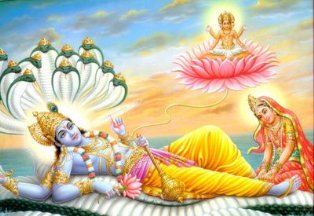
Did you know that the Mahabharata and the Ramayana were an integral part of the Indian education system until the British introduced their own way of “educating” Indians? Noted historian and political thinker Dharampal has extensively researched this subject in his books.
Countless generations in India were educated, engrossed and enthralled by these stories. The importance of the Mahabharata cannot be overstated as it bestowed knowledge, piety, wisdom, discrimination, morality, inner strength and a host of other virtues to the listener as well as the reader. The story remains ever popular, and even a spiritually watered-down version managed to put the entire country on a standstill when it was first telecast some twenty-odd years ago.
The Americans have a saying: “If it ain’t broke, then don’t fix it.” The meaning is simple: If something is working fine, then do not touch it. The Mahabharata was doing fine as it was given by Srila Vyasadeva and was thus accepted by the whole continent as it is. It was the mischievous tinkering done by some so-called scholars that started the fashion of thinking that the Pandavas represent the senses, Kuruksetra the body, and Kanna is the soul, and so on.
Once there was a king who had a wise sage as his advisor. The king asked the meaning of a particular verse from the Puranas:
Sarva vighno pashantaye
The teacher explained:
“Dressed in white you are, O all pervading one And glowing with the color of moon. With four arms, you are, the all knowing one I meditate on your ever-smiling face, And pray, remove all obstacles on my way.”
However there was an envious scholar who told the king that he had found a new interpretation of this verse. He claimed that this verse describes the shining silver rupee coin. The silver rupee is white (Shuklambaradaram), widely popular (Vishnum), shining (Shashivarnam ), and bestows the fourfold (Chaturbhujam) benefits of dharma, artha, kama and moksa. One who gets this rupee becomes very pleased (Prasanna vadanam Dhyaayeth), and it enables you to get rid of all obstacles.
Being highly pleased with this explanation, the idiotic king fired his old teacher and appointed the new one. When another rascal scholar heard this news, he thought that he can give an even better explanation. He told the king that this verse describes a dahi-vaoa (a popular snack in India). The perplexed king asked whether he can prove it. So the scholar said the dahi-vaoa is also white and shining. It can be licked, sucked, drunk and chewed, so all four categories of eating can be satisfied. Everyone likes it and after eating, one really feels very pleasant, and thus all problems in life are solved.
What do you think the king did after hearing the newest interpretation? Correct – he sacked the old teacher and appointed the new scholar as the teacher.
And thus the saga continues even in real life in India where every year a “new” interpretation comes to light.
